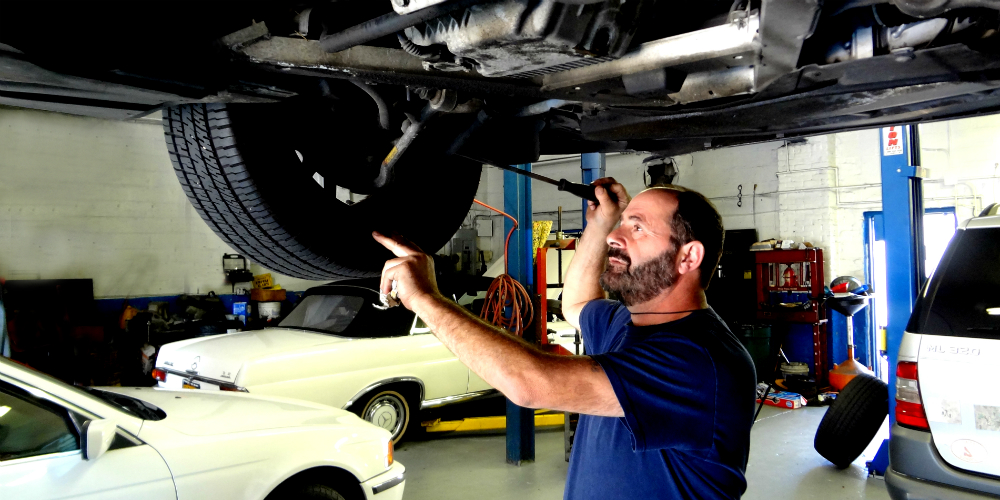All Categories
Featured
Two of the most crucial tire services are tire turning and placement. If you're unknown with what tire turning and positioning require, below's a comprehensive look at why they matter and exactly how they benefit your car.
What Is Tire Rotation? Tire rotation refers to relocating your tires from one placement to one more to ensure they use uniformly. The reason tire rotation is necessary is because not all tires wear the same method.
By revolving your tires regularly, you can stabilize out the wear throughout all four tires. This aids them last much longer and permits even more also grip, enhancing handling and security. The majority of producers advise turning your tires every 6,000 to 8,000 miles or as per the vehicle's handbook.
What Is Tire Alignment? Tire alignment, also understood as wheel positioning, refers to the process of adjusting the angles of your car's wheels to satisfy the manufacturer's specs. The goal of positioning is to guarantee that all four tires are directing in the appropriate instructions and at the correct angles, which allows for optimum handling, safety, and tire life.
There are 3 primary positioning angles that are readjusted during a positioning check:

Camber: The tilt of the wheels when seen from the front. If the camber is off, it can result in uneven tire wear, as the tire will certainly not make complete contact with the roadway surface. Wheel: The angle of the steering axis when watched from the side. Appropriate wheel placement makes sure that your vehicle is stable when driving straight and that your steering wheel go back to its normal placement after a turn. Toe: The angle at which the tires aim inward or outside when checked out from above. Wrong toe positioning can create the tires to drag, resulting in unequal wear and lowered gas performance. Imbalance can occur over time due to typical driving or from hitting barriers like aesthetics or splits. If your placement is off, it is essential to get it inspected and corrected to stay clear of problems down the road.
Why Tire Rotation and Alignment Issue. Raised Tire Life:. Routine tire rotation makes certain also tire wear, assisting you obtain the most gas mileage out of your tires. Irregular wear can create you to replace tires too soon, which can be expensive. When your tires use evenly, they last longer, saving you cash in the lengthy term.
Improved Lorry Handling:. Proper positioning keeps your lorry driving straight and stable, specifically at higher speeds. Misalignment can create your automobile to draw to one side, making it more difficult to steer. By maintaining your tires straightened, you guarantee your automobile manages a lot more smoothly and naturally.
Improved Safety And Security:. Tires that are not rotated or lined up effectively can wear erratically, impacting how well your lorry stops and corners. Misaligned tires or tires with unequal wear patterns may cause minimized grip, specifically in wet or icy conditions, leading to a higher risk of accidents.
Much Better Fuel Performance:. Tires that are misaligned can develop rolling resistance, indicating your engine needs to function tougher to move the vehicle. This raises fuel consumption and lowers your auto's gas efficiency. Correct tire placement lowers rolling resistance, which can enhance gas mileage.
Indications Your Tires Required Rotation or Positioning. While it's necessary to remain on top of routine tire rotations and alignments, there are a few indicators that may suggest your tires need focus:
Unequal Put On: If you notice that tire is more worn than the others, it's most likely time for a rotation. Steering Pull: If your vehicle draws away or really feels off-center, it could be a sign of imbalance. Resonances: If you feel vibrations in the steering wheel or the automobile, it can be due to a positioning problem. Noisy Tires: Screeching or loud tires can show incorrect turning or imbalance. If you discover any one of these signs, it is necessary to obtain your tires inspected by a specialist.
How Frequently Should You Rotate and Straighten Your Tires? Tire turning must usually be done every 6,000 to 8,000 miles, though this can differ based on your driving problems and the kind of car you drive. It's also a good idea to have your tires revolved whenever you get an oil adjustment.
For positioning, you must have your tires lined up every 1-2 years, or a lot more frequently if you see any type of problems with managing or unequal tire wear. If you hit a big crater or visual, it's smart to obtain a positioning examine right away.
Final Thought: Regular Maintenance for Optimal Efficiency. Tire turning and alignment are 2 simple but important solutions that maintain your auto running smoothly, effectively, and securely. By revolving your tires frequently and keeping your wheels properly straightened, you can extend the life of your tires, boost handling, and appreciate far better gas efficiency. Don't wait on your tires to show indications of wear-- timetable regular maintenance to keep your automobile in leading form. Normal tire care is an investment that repays in the future, maintaining you and your guests risk-free when driving.
Latest Posts
Why Select Constant Panel Fence from Montana Fencing?
Why Pick Montana Fence Plastic Fencing for Your Next Task?
Car Repair Experts Today! at MO